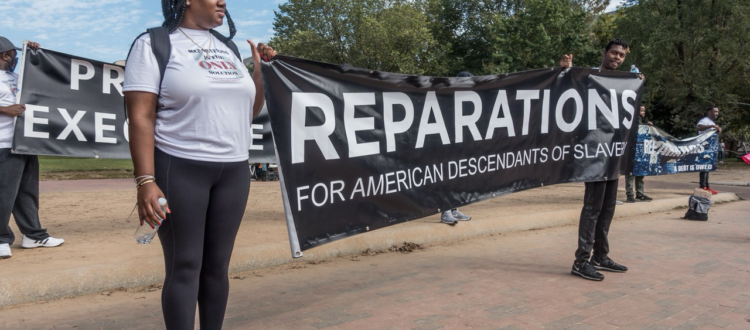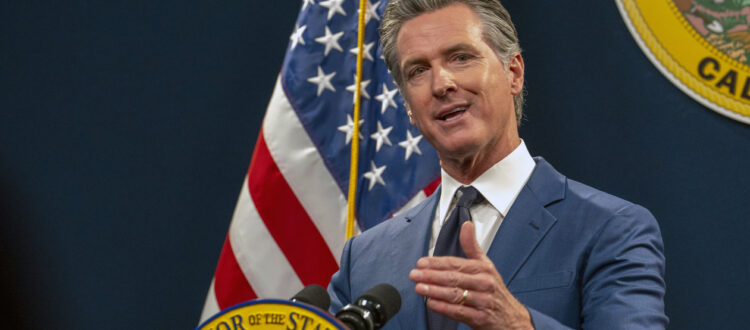Joe W. Bowers Jr. | California Black Media
On May 10, Gov. Gavin Newsom presented his annual revision of the state budget for the 2024-25 fiscal year.
Commonly referred to as the “May Revise,” the $288 billion spending plan focuses on stringent spending cuts, improving government efficiency, streamlining procurement, cutting bureaucratic obstacles, and reducing redundancies rather than resorting to tax increases or implementing worker furloughs.
“Without raising taxes on Californians, we’re delivering a balanced budget over two years that continues the progress we’ve fought so hard to achieve, from getting folks off the streets to addressing the climate crisis to keeping our communities safe.” Newsom stated.
Highlights of the proposed budget include:
Achieving Fiscal Stability Over Two Years
The budget tackles deficits for both the current budget year and the next, eliminating a projected $27.6 billion deficit for the 2024-25 fiscal year and a projected shortfall of $28.4 billion deficit for the next fiscal year. By tackling these budget shortfalls now, Newsom aims to achieve a positive operating reserve balance over the next two fiscal years.
Streamlining Spending and Enhancing Efficiency
To address the budget deficit, Newsom’s budget cuts one-time spending by $19.1 billion and ongoing spending by $13.7 billion through 2025-26. These cuts involve various measures, such as slashing $260 million from the Homeless Housing, Assistance and Prevention program (HHAP), reducing operations costs by 7.95% across nearly all state departments, eliminating 10,000 vacant state positions, and scaling back funding for certain programs, including education initiatives like the Middle-Class Scholarship program and childcare expansion projects.
Newsom is proposing $3.6 billion less for climate change initiatives and plans to decrease funding for expanding internet access to underserved areas by $2 billion over two years. Additionally, funding cuts are proposed for programs addressing shortages in healthcare workers such as nurses and social workers, while healthcare providers serving Medi-Cal patients will lose extra pay incentives.
Newsom’s plan involves revisiting Proposition (Prop) 98, a constitutional provision that guarantees a minimum level of funding for California’s schools and community colleges. By adjusting the funding requirement for the fiscal year 2022-2023 to reflect lower-than-anticipated state revenues from the previous year, Newsom aims to align education funding with current financial realities. However, this move could potentially lead to significant cuts in future school funding, raising concerns among education advocates.
Safeguarding Vital Services and Social Safety Nets
Despite facing budget cuts, many public assistance programs, such as those providing food, healthcare, and educational services like pre-kindergarten for 4-year-olds, will maintain their current levels of support. Efforts to achieve this involve pausing expansion of some programs and reducing new investments, all while prioritizing fiscal responsibility alongside meeting the essential needs of residents, which includes keeping the promise to extend Medi-Cal coverage to undocumented immigrants.
Maintaining Fiscal Stability Without Tax Increases
The budget emphasizes fiscal stability without resorting to tax increases. Instead, it seeks to enhance government efficiency and reduce spending redundancies. Additionally, the plan minimizes reliance on the state’s “Rainy Day” reserves, preserving these funds for future emergencies.
Senate President pro Tempore Mike McGuire (D-North Coast) and Senate Budget and Fiscal Review Committee Chair Sen. Scott Wiener (D-San Francisco) commended the collaborative efforts between the
Legislature and the Governor to balance the budget, highlighting the $17 billion reduction in the projected deficit achieved through their Early Action Agreement.
Speaker of the Assembly Robert Rivas (D-Salinas) and Assembly Budget Committee Chair Jesse Gabriel (D-Encino) acknowledged the improved budget forecast and the preservation of rainy-day reserves, but expressed concern over proposed cuts, pledging to protect crucial programs for vulnerable Californians and classroom funding.
Assembly Republican Leader James Gallagher (R-Yuba City) said Newsom’s spending plan is “wasteful and irresponsible.”
“Newsom made big promises he can’t possibly keep while wasting billions on homelessness programs that don’t work and a high-speed train to nowhere. Now he’s forced to make cuts to programs Californians rely on,” said Gallagher said in a statement. “Newsom played fast and loose with our money and now the game is up.”
California School Board Association (CSBA) President Albert Gonzalez criticized Newsom’s budget plans, citing potential unconstitutional manipulation of Prop 98 funds. He warned against diverting $8.8 billion meant for schools to non-education spending and stressed the need to protect Prop 98.
“To serve California students, we must preserve Prop 98, avoid new pet projects, remain focused on the effective implementation of existing programs, identify resources to address staffing shortages and stop the growth of unfunded mandates that negatively impact existing initiatives and reduce local control,” Gonzalez said.
During the presentation, Joe Stephenshaw, the state Director of Finance, emphasized to the media that, “We tried to focus on protecting the core programs and services that people rely on, but even in doing that, tough
decisions had to be made.” He further stressed, “The budget is about solutions to not only solve for a year, but the subsequent budget year.”
In response to the Governor’s presentation, California State Controller Malia M. Cohen said the state exceeded its revenue target by nearly $150 million in April, but year-to-date revenues remain at levels “lower-than-expected. However, Cohen affirmed that the state has “unused borrowable resources” that can be utilized to balance the budget.
“The high level of borrowable resources is due in large part to the $26 billion the state has prudently built up and reserved for rainy days and economic uncertainties. Maintaining enough cash to cushion against economic downturns has been one of California’s strengths in its credit ratings, and this ensures the state will continue to meet its payment obligations.”
The state Constitution requires state lawmakers to approve the state budget by June 15. Newsom then has until July 1 to finalize the spending plan with the Legislature.











